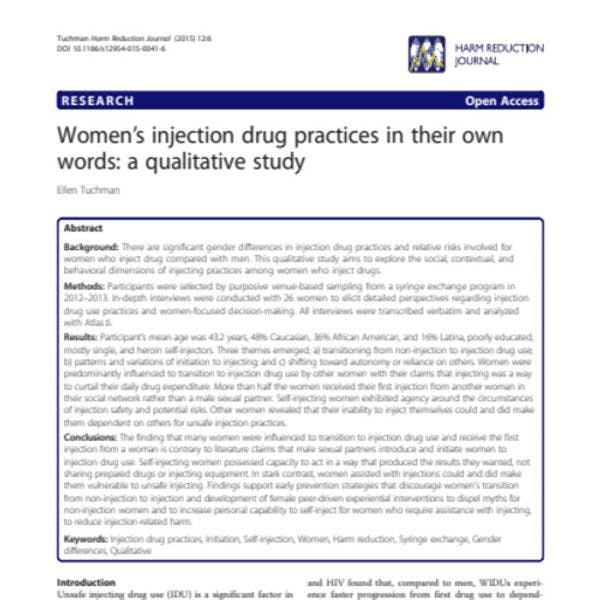Women’s injection drug practices in their own words: A qualitative study
There are significant gender differences in injection drug practices and relative risks involved for women who inject drug compared with men. This qualitative study aims to explore the social, contextual, and behavioral dimensions of injecting practices among women who inject drugs.
The finding that many women were influenced to transition to injection drug use and receive the first injection from a woman is contrary to literature claims that male sexual partners introduce and initiate women to injection drug use. Self-injecting women possessed capacity to act in a way that produced the results they wanted, not sharing prepared drugs or injecting equipment. In stark contrast, women assisted with injections could and did make them vulnerable to unsafe injecting.
Findings support early prevention strategies that discourage women’s transition from non-injection to injection and development of female peer-driven experiential interventions to dispel myths for non-injection women and to increase personal capability to self-inject for women who require assistance with injecting, to reduce injection-related harm.
Keep up-to-date with drug policy developments by subscribing to the IDPC Monthly Alert.
